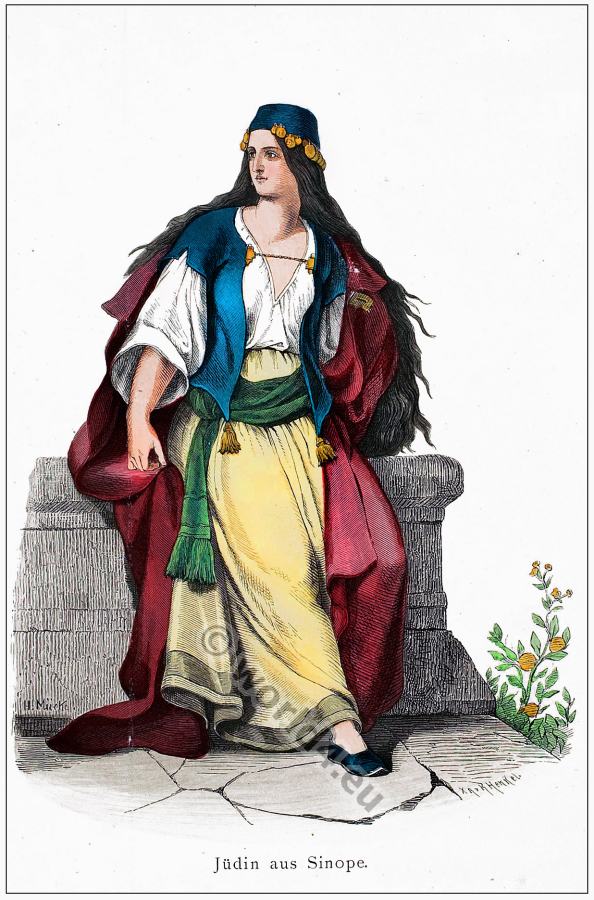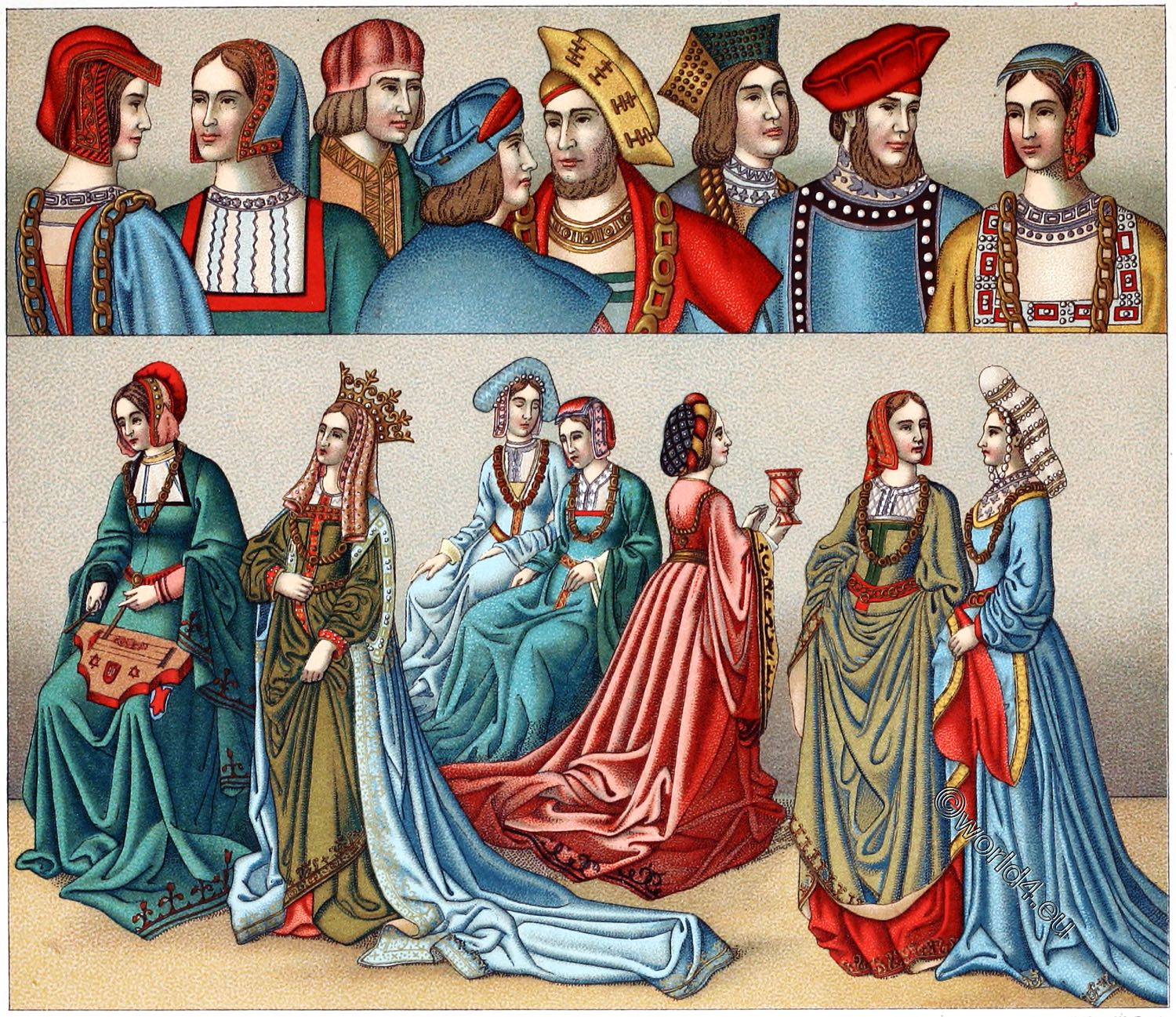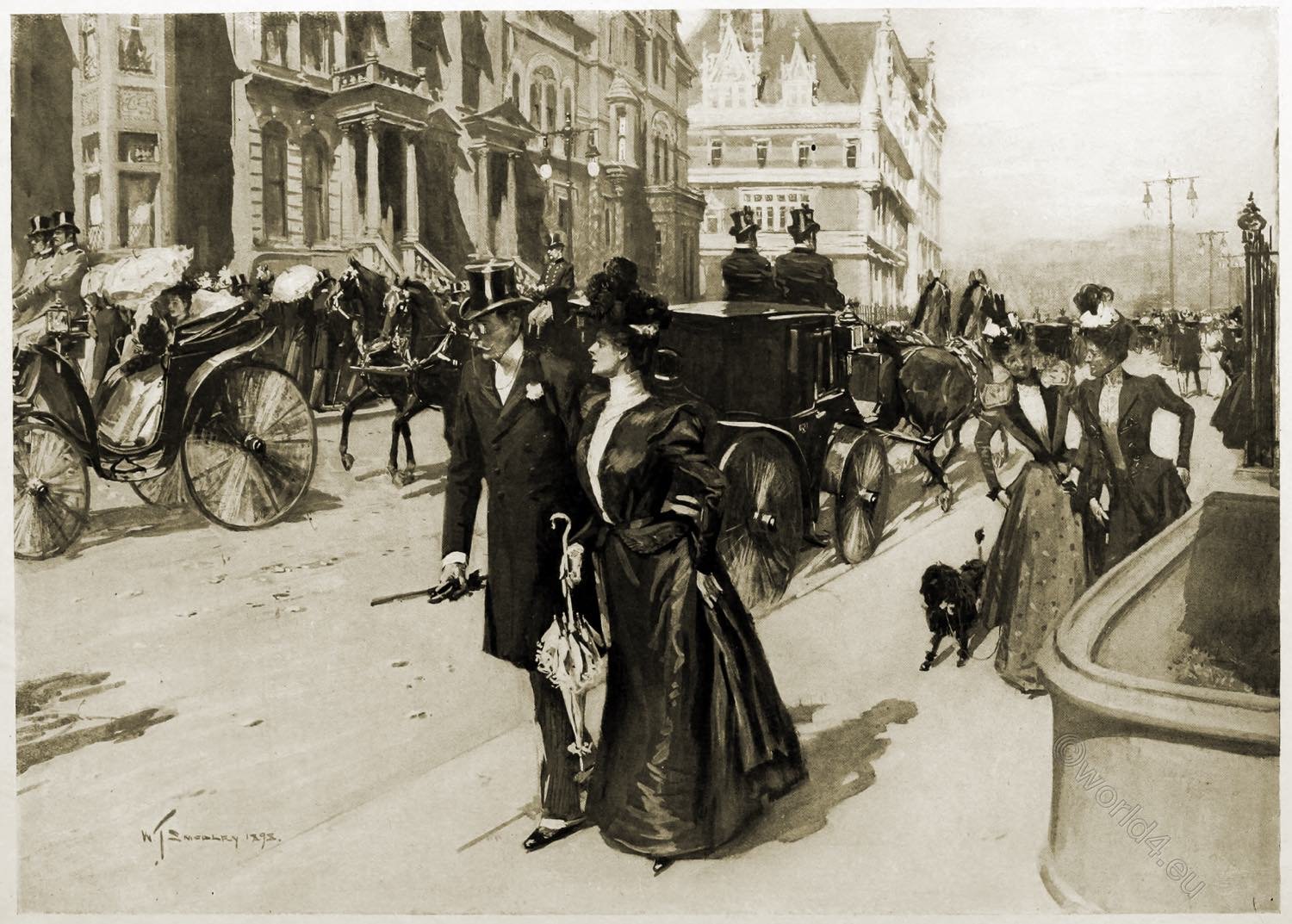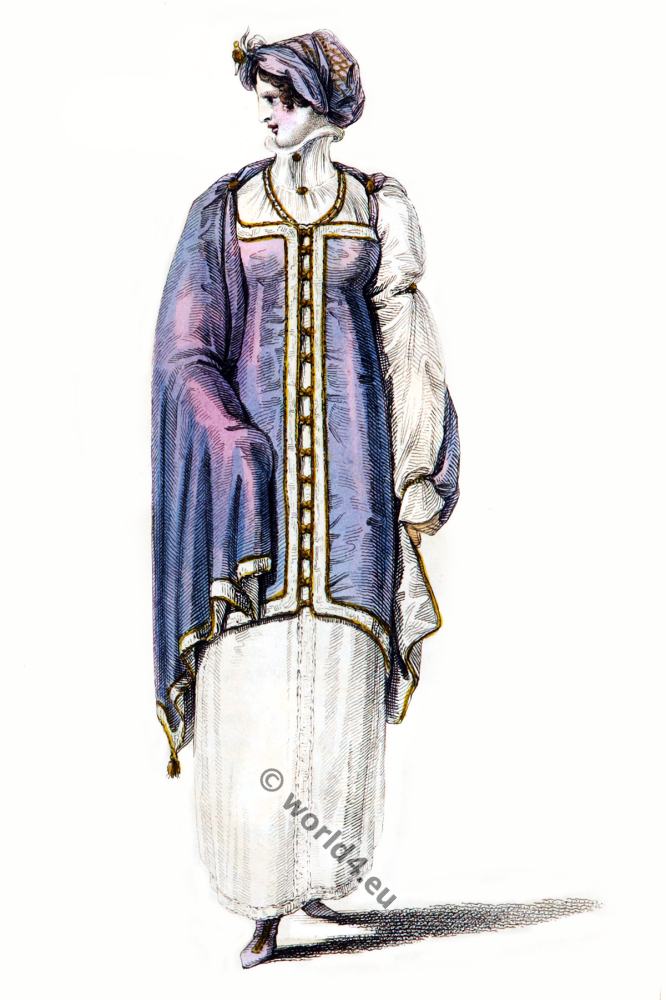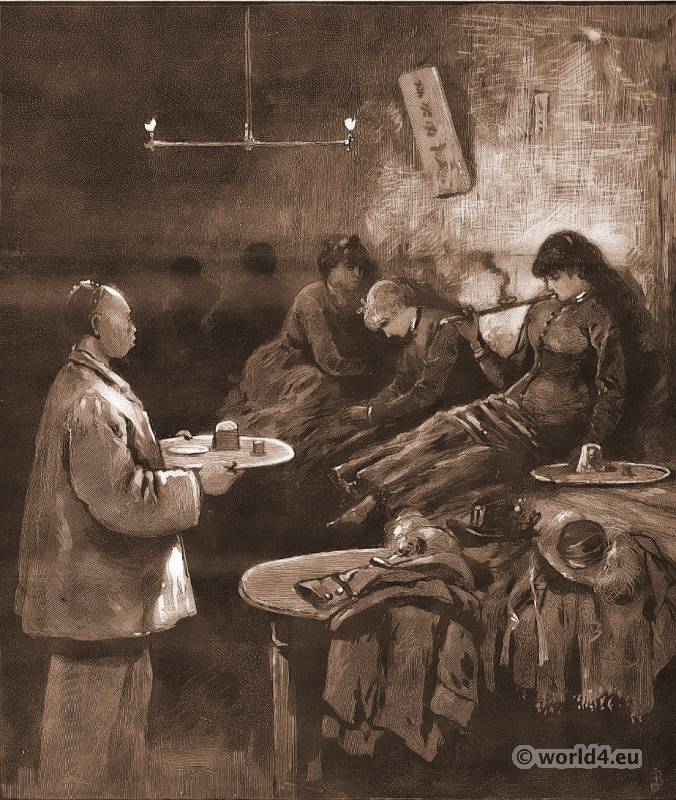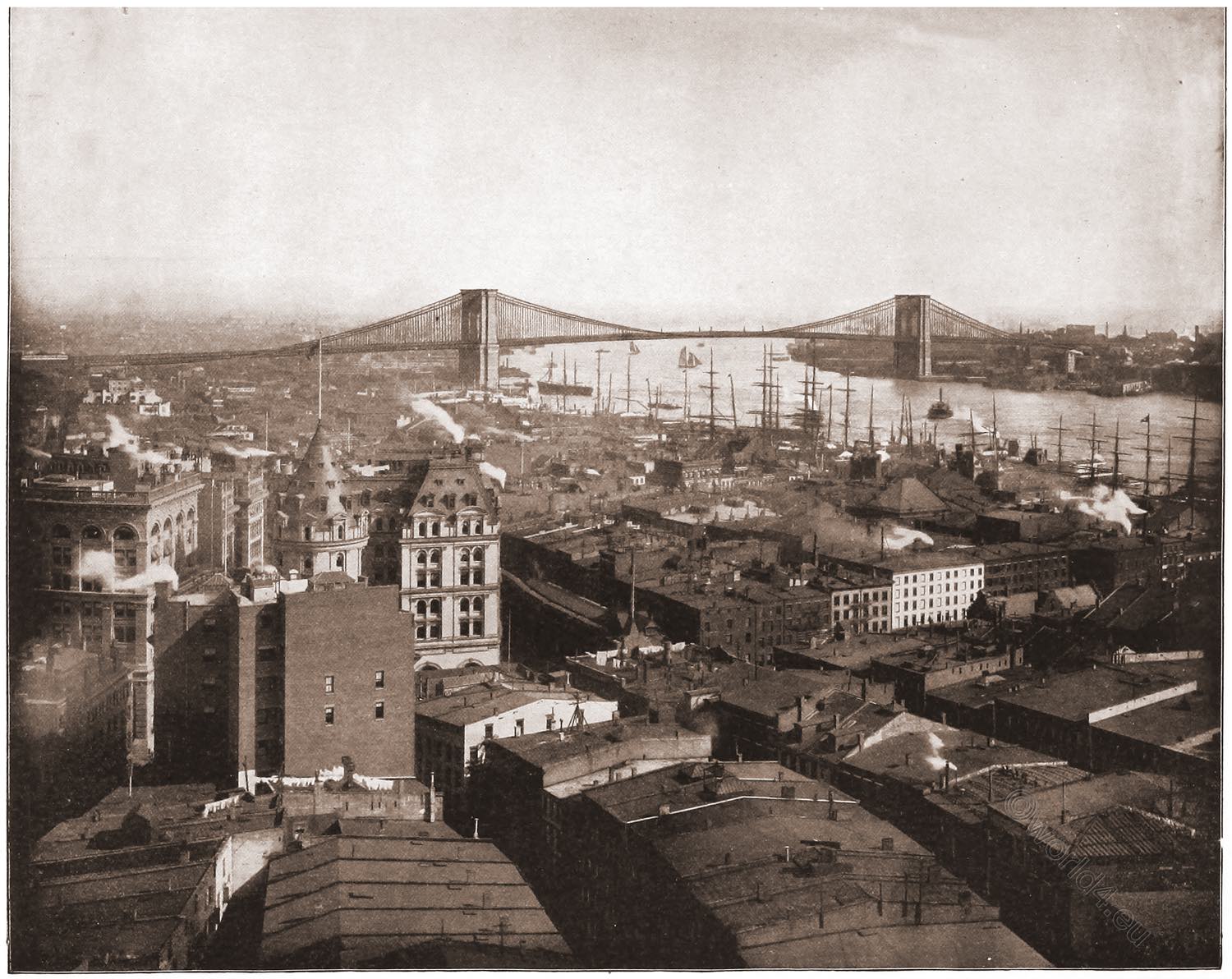
NEW YORK AND THE BROOKLYN BRIDGE
by John L. Stoddard.
“On se fait a tout avec le temps,” (“One gets accustomed to everything in time,”) is a true proverb. No doubt the old Egyptians hardly glanced at trretr gigantic Pyramids after a dozen years of familiarity with their stupendous forms.
So now the people of New York and Brooklyn find nothing specially extraordinary in this great arch of steel and iron which unites their cities, simpl’y because they have at last become accustomed to beholding it. It is, however, one of the marvels of the world.
Each of its mighty towers rests upon a caisson constructed of yellow pine timber, which on the Brooklyn side is forty-five feet, and on the New York side seventy-eight feet below the surface of the water. The towers erected on these enormous foundations an one hundred and forty feet in height and fifty feet in width at the water line.
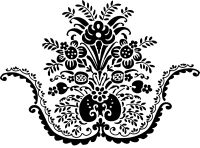
The bridge itself is suspended from four cables of steel wire, each about sixteen inches in diameter and having a deflection of one hundred and twenty-eight feel. The central span across the East River from tower to tower is 1,595 feet long. The entire length of the structure is 5,989 feet. It is eighty-five feet wide, and contains a central promenade for foot passengers, two railroad tracks, along which trains of cable cars are run every three minutes, and two roadways for carriages.
The height of the floor of the bridge in the centre to high-water mark is one hundred and thirty-five feet, so that navigation is not impeded. The construction of this noble specimen of engineering skill was begun in January, 1870, and was completed in May, 1883. Its cost was about fifteen millions of dollars, The fare across by car is three cents, and for foot-passengers one cent, About 125,000 people cross it daily.
Source: Glimpses of the world; a portfolio of photographs of the marvelous works of God and man by John Lawson Stoddard (1850-1931). Chicago, R.S. Peale, 1892.

Continuing
Discover more from World4 Costume Culture History
Subscribe to get the latest posts sent to your email.

